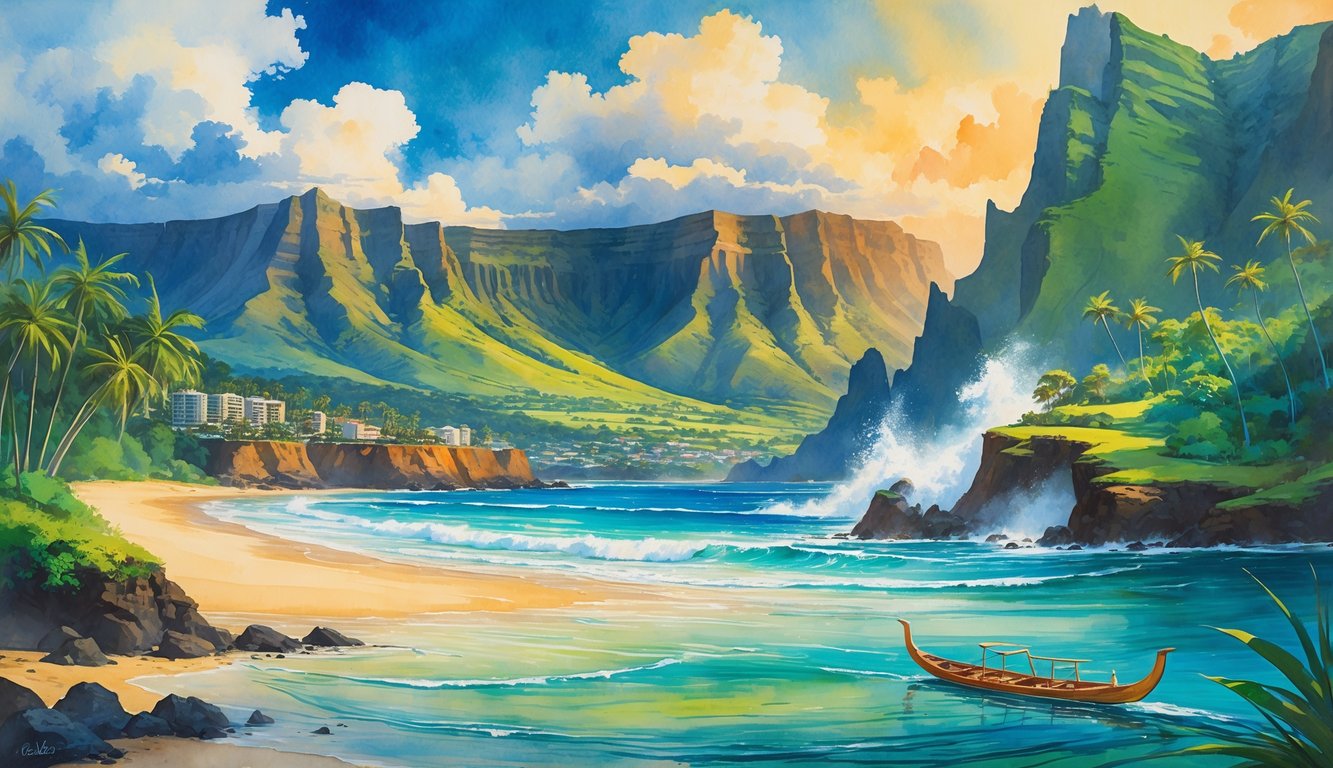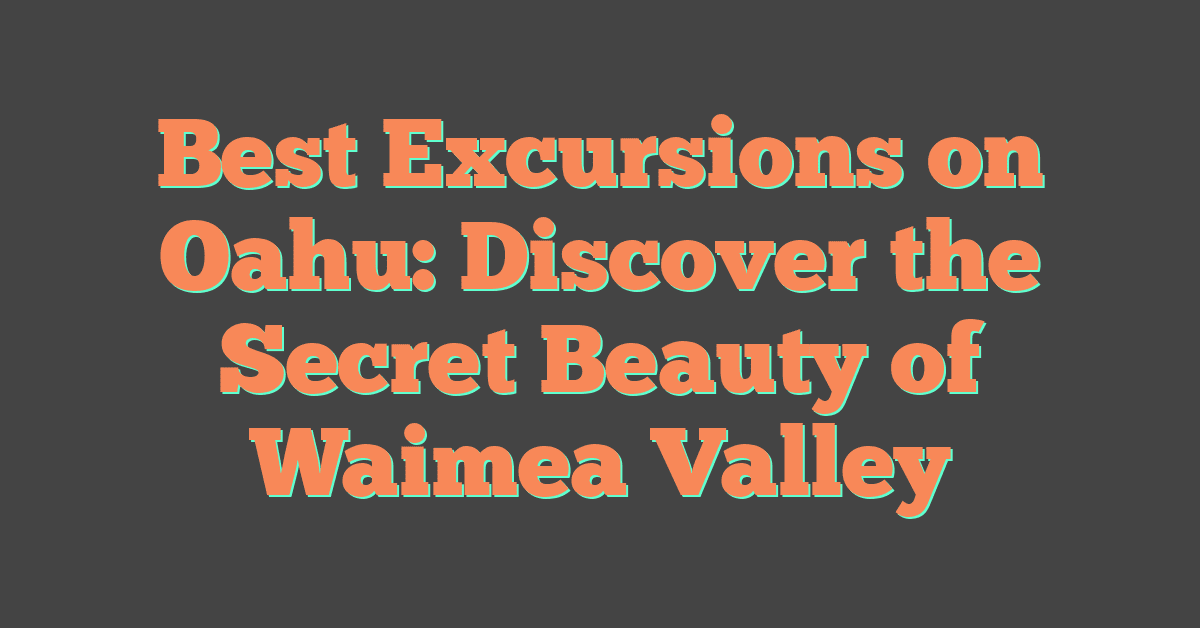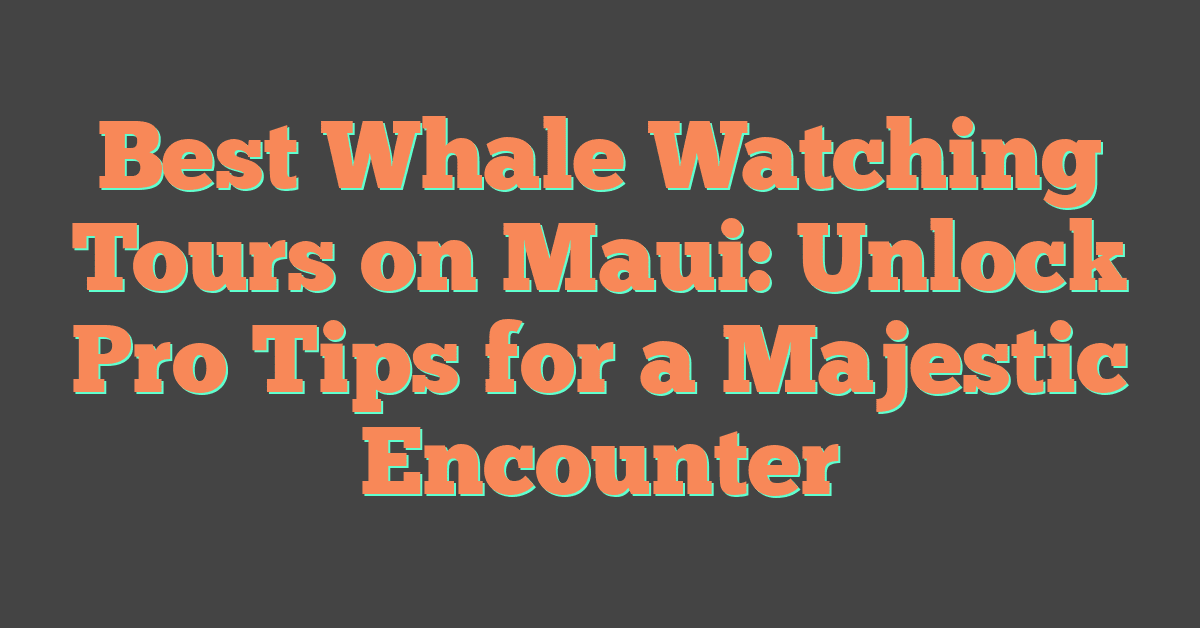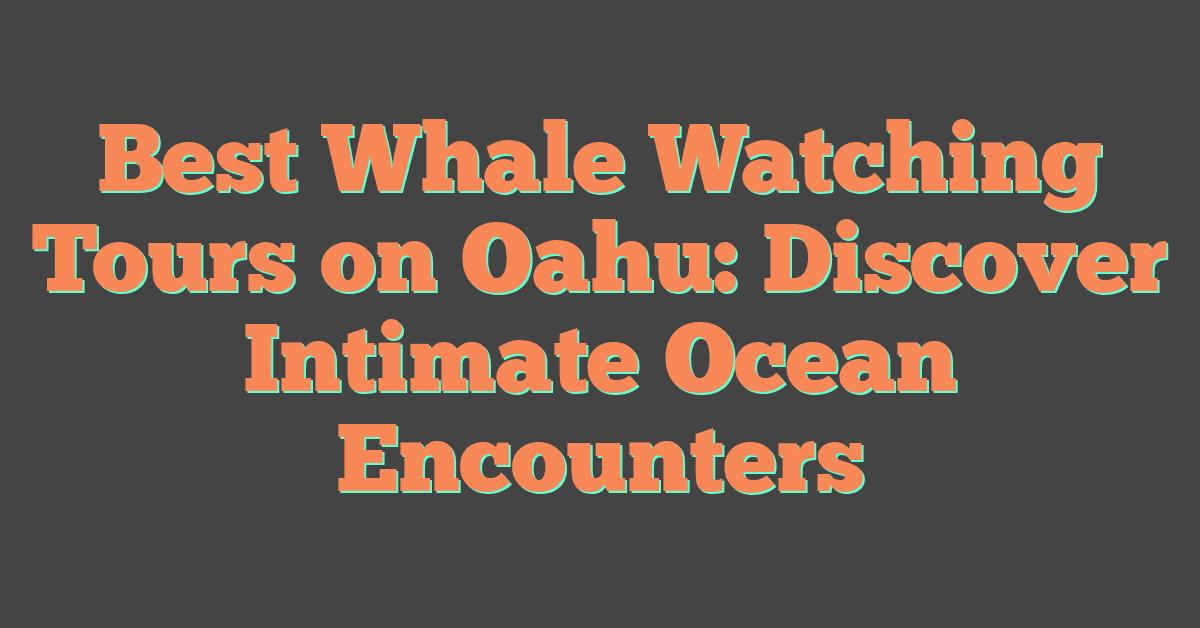Maui, known as the Valley Isle, offers stunning landscapes, rich culture, and activities for every pace. From sunrise views high above the clouds at Haleakalā National Park to the lush curves of the Road to Hāna, each stop feels like a new chapter in Hawaiʻi’s beauty.

The top attractions in Maui combine natural wonders, inviting beaches, and cultural landmarks into experiences worth adding to any Maui bucket list.

You can explore volcanic craters, snorkel in clear waters at Molokini Crater, or relax on golden sand at Kāʻanapali Beach. Historic sites, vibrant local markets, and family-friendly spots offer even more variety.
You might hike through bamboo forests or watch humpback whales in season. Maui’s range of things to do keeps every day fresh.
Iconic Natural Wonders of Maui
Volcanic activity, tropical weather, and centuries of natural growth have shaped Maui’s unique landscapes. You can explore winding coastal highways, high-altitude volcanic craters, and lush valleys with striking rock formations.
These places combine scenic beauty with cultural and ecological importance.
Road to Hana Adventure
The Road to Hana runs along Maui’s northeast coast for about 64 miles on the Hana Highway. Over 600 curves and nearly 60 bridges make the drive memorable.
Drivers pass through rainforests, waterfalls, and coastal cliffs. Popular stops include the Garden of Eden Arboretum with tropical plants and ocean views, and Waiʻānapanapa State Park, home to Honokalani Black Sand Beach.
Many travelers also visit the Seven Sacred Pools at ʻOheʻo Gulch in East Maui. Because the road is narrow and winding, travelers often spend a full day exploring.
Start early, bring snacks, and plan stops in advance. Some people choose guided tours to avoid driving stress and to learn about the history and nature of the route.
For more details on key stops, see this Road to Hana guide.
Haleakalā National Park and Volcano
Haleakalā National Park covers over 30,000 acres and includes the massive Haleakalā Volcano, which rises 10,023 feet above sea level. The summit area offers sunrise and sunset views above the clouds.
Hikers often explore the Sliding Sands Trail, which descends into the crater. Colorful volcanic rock and cinder cones make the terrain unique.
Weather can change quickly, so wear layered clothing. The park also includes the Kīpahulu District in East Maui, where you can hike to waterfalls and freshwater pools.
You might spot wildlife such as the nēnē, Hawaii’s state bird, in the park. Learn more about visiting Haleakalā National Park.
Iao Valley State Park and Iao Needle
Iao Valley State Park sits in central Maui and is known for its lush scenery and the Iao Needle, a 1,200-foot-tall green-covered rock pinnacle. Frequent rainfall feeds the valley’s streams and plant life.
A short paved trail leads to a lookout with clear views of the needle and surrounding cliffs. The area is also important in Hawaiian history as the site of the Battle of Kepaniwai in 1790.
Bring rain gear and wear sturdy shoes, as the paths can be slippery. Parking is limited, so arrive early to avoid crowds.
Find more information about Iao Valley State Park.
Unforgettable Maui Beaches and Water Activities
Maui has golden and black sand beaches, calm bays for snorkeling, and world-class surf spots. Clear waters, diverse marine life, and scenic shorelines create perfect places for relaxation and adventure.
Ka’anapali Beach and West Maui Shores
Ka’anapali Beach stretches for three miles along Maui’s west coast. Its soft sand and calm, clear water make it a favorite for swimming and paddleboarding.
Resorts, shops, and dining line the beachfront walkway, giving you easy access to amenities. At the southern end, Black Rock is a well-known snorkeling area where Hawaiian green sea turtles often appear.
In the evenings, cliff divers perform a traditional ceremony here. Nearby Kapalua Bay offers a sheltered cove with gentle waves, ideal for beginner snorkelers.
Honolua Bay, just north of Kapalua, is a marine conservation area that attracts experienced snorkelers and divers for its coral reefs and abundant fish. These West Maui shores offer both lively beachfront activity and quieter coves for those seeking a slower pace.
Wailea Beach and South Maui Escapes
Wailea Beach in South Maui is known for its calm surf, wide sandy shore, and upscale resort setting. You can swim here most of the year, and restaurants and shops are a short walk away.
A coastal walkway connects Wailea to other beaches, including Maluaka Beach in Makena. Maluaka is sometimes called “Turtle Town” for its frequent Hawaiian green sea turtle sightings.
The sandy entry and clear water make it a great family-friendly choice. Further south, Makena State Park offers Big Beach with long stretches of sand and stronger waves, and Little Beach, a smaller cove separated by a rocky path.
These beaches give you options from peaceful snorkeling spots to more adventurous wave conditions.
Snorkeling at Molokini Crater
Molokini Crater is a crescent-shaped volcanic islet about three miles off Maui’s south shore. Its protected waters often have visibility over 100 feet, making it a top Hawaiian snorkeling destination.
Over 250 species of fish live in the crater’s reef, many found only in Hawaii. Snorkelers may also see manta rays and moray eels.
The inside of the crater offers calm conditions, while the back wall attracts experienced divers. Most visitors reach Molokini by boat tours from Ma‘alaea Harbor or Kihei.
Tours often combine a stop at Molokini with snorkeling at Turtle Town near Maluaka Beach.
Surfing and Water Sports Hotspots
Maui has surf breaks for all skill levels. Ho‘okipa Beach Park on the north shore is famous for windsurfing and kiteboarding, with steady trade winds and challenging waves.
Spectators watch from the cliffs above. In Kihei and Lahaina, calmer conditions allow beginners to try surfing or stand-up paddleboarding.
These areas also offer kayak rentals for exploring the coastline. For experienced surfers, Honolua Bay’s winter swells create powerful right-hand point breaks.
West Maui’s beaches, including Ka’anapali, offer seasonal boogie boarding and body surfing opportunities. Water sports in Maui are available year-round, with different coasts offering the best conditions depending on the season.
Cultural Experiences and Historic Sites

You can see how Hawaiian history shaped Maui’s identity at many sites. Walk through preserved towns, enjoy traditional food and music, and explore areas where local culture still thrives.
Lahaina’s Rich Heritage
Before the 2023 wildfires, Lahaina served as a National Historic Landmark known for its role in the whaling era and as the former capital of the Hawaiian Kingdom. The Lahaina Historic Trail led visitors to key points in Hawaiian history.
Important stops once included the Baldwin Home Museum and Wo Hing Temple. These places showcased life during the 19th century and the influence of Chinese immigrants.
People can still learn about Lahaina’s past through exhibits, photographs, and cultural programs in other parts of Maui. The Maui Visitors Guide lists locations that preserve artifacts and share stories from this important town.
Traditional Hawaiian Luau
A Hawaiian luau offers a mix of food, music, and storytelling that reflects island traditions. Guests often enjoy kalua pig, cooked in an underground oven called an imu, along with poi, lomi salmon, and tropical desserts.
Live performances feature hula dancers and musicians playing ukulele and drums. These shows often include chants and legends that explain the meaning behind each dance.
Popular luaus in Maui include the Old Lahaina Luau and Feast at Lele, both known for their cultural accuracy and oceanfront settings. The Lonely Planet guide to Maui’s cultural experiences highlights these events as a way to connect with local traditions.
Paia Town and Upcountry Discoveries
Paia Town sits on Maui’s north shore and blends surf culture with small-town charm. You’ll find colorful storefronts, art galleries, and cafés.
Many visitors stop here before driving the Road to Hana. Upcountry Maui, including Makawao, offers a cooler climate and a mix of ranching and art traditions.
Makawao is known for its paniolo (Hawaiian cowboy) history and glassblowing studios. Nearby, you can enjoy wine tasting at MauiWine in Ulupalakua or dine at the famous Mama’s Fish House in Paia.
The Love Big Island guide to Maui’s history and culture notes that these areas give travelers a different pace from the beach resorts and a closer look at local life.
Unique Maui Attractions and Family Favorites

You’ll find marine life exhibits, dramatic coastal formations, lush gardens, and quiet local spots that offer a slower pace than the busier beaches. These places give both adults and children a chance to explore nature, learn about Maui’s environment, and enjoy memorable activities.
Maui Ocean Center Exploration
The Maui Ocean Center in Ma’alaea offers a close look at Hawaii’s marine life. Families can see living coral reefs, tropical fish, and native sea turtles in large tanks.
The Open Ocean Tunnel stands out as a highlight. Visitors walk through a clear tunnel while sharks, rays, and schools of fish swim around them.
This view helps children and adults watch how these animals move and interact. Educational displays show the role of each species in the ocean ecosystem.
Children can feel sea stars and other small creatures in touch pools under staff supervision. The center shares ways to protect marine habitats through conservation exhibits.
Families can enjoy a shaded area, café, and gift shop. The center is a convenient stop for visitors staying anywhere on the island.
Nakalele Blowhole and Coastal Wonders
The Nakalele Blowhole sits on Maui’s northwest coast. When waves hit the lava rock, the blowhole sends seawater high into the air.
The spray’s height changes with tide and wave conditions. Mornings with strong surf often make the blowhole more dramatic.
The walk to the blowhole is short but crosses uneven lava rock. Visitors should wear sturdy shoes and keep a safe distance from the opening, as the water can be dangerous.
The coastline offers striking views of cliffs and tide pools. Many travelers search for the nearby “heart-shaped rock,” a hole in the lava that frames the ocean.
This spot is great for photography. Visitors who want to see Maui’s rugged shoreline away from busy resort areas will enjoy it.
Garden of Eden Arboretum
The Garden of Eden Arboretum along the Hana Highway features over 700 plant species. Visitors can see native Hawaiian flowers and exotic trees.
Well-marked walking paths lead to overlooks with views of waterfalls and the Pacific Ocean. A favorite stop is the viewpoint of Puohokamoa Falls, which is visible without a long hike.
Families can use shaded picnic areas and open lawns where children can move freely. Peacocks and other birds roam the grounds, adding to the relaxed atmosphere.
Information signs identify plants and explain their uses in Hawaiian culture. The garden’s location on the way to Hana makes it easy to combine with other stops along the scenic drive.
Hidden Gems and Local Favorites
Maui has smaller spots that locals enjoy beyond the well-known sites. These include quiet beaches, small-town markets, and lesser-known hiking trails.
For example, Launiupoko Beach Park has calm waters for young swimmers. The park also offers shaded picnic tables.
In Makawao, visitors can explore art galleries. Small cafés in this historic upcountry town welcome guests.
Weekly farmers’ markets in towns like Kihei and Wailuku sell fresh fruit and baked goods. Shoppers can also find handmade crafts and meet local growers and artisans.




